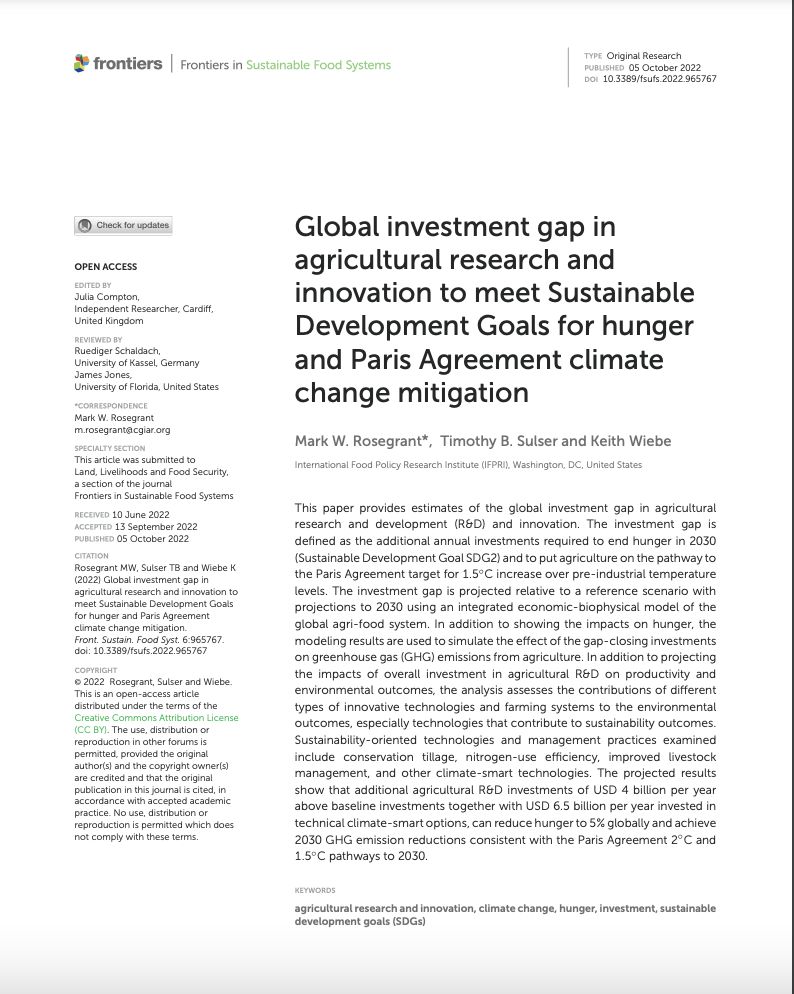Global investment gap in agricultural research and innovation to meet Sustainable Development Goals for hunger and Paris Agreement climate change mitigation

This paper provides estimates of the global investment gap in agricultural research and development (R&D) and innovation. The investment gap is defined as the additional annual investments required to end hunger in 2030 (Sustainable Development Goal SDG2) and to put agriculture on the pathway to the Paris Agreement target for 1.5◦C increase over pre-industrial temperature levels. The investment gap is projected relative to a reference scenario with projections to 2030 using an integrated economic-biophysical model of the global agri-food system. In addition to showing the impacts on hunger, the modeling results are used to simulate the effect of the gap-closing investments on greenhouse gas (GHG) emissions from agriculture. In addition to projecting the impacts of overall investment in agricultural R&D on productivity and environmental outcomes, the analysis assesses the contributions of different types of innovative technologies and farming systems to the environmental outcomes, especially technologies that contribute to sustainability outcomes. Sustainability-oriented technologies and management practices examined include conservation tillage, nitrogen-use efficiency, improved livestock management, and other climate-smart technologies. The projected results show that additional agricultural R&D investments of USD 4 billion per year above baseline investments together with USD 6.5 billion per year invested in technical climate-smart options, can reduce hunger to 5% globally and achieve 2030 GHG emission reductions consistent with the Paris Agreement 2◦C and 1.5◦C pathways to 2030.